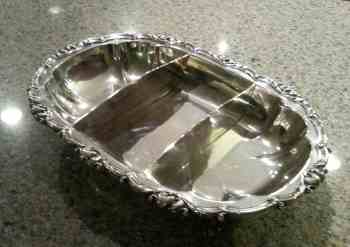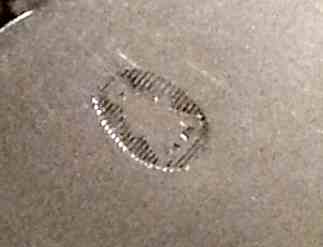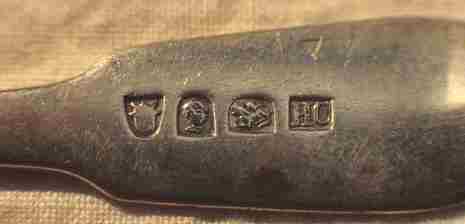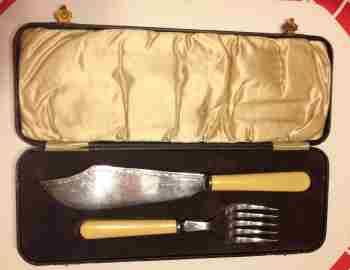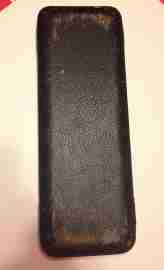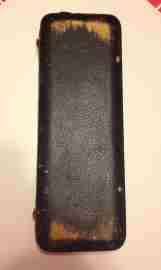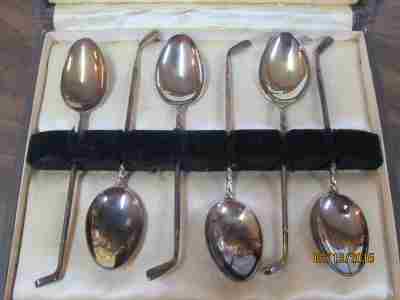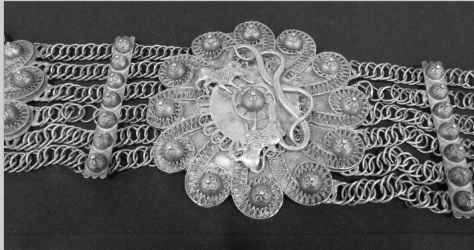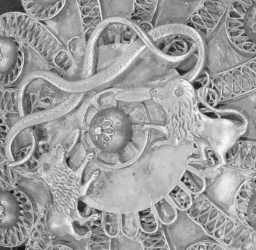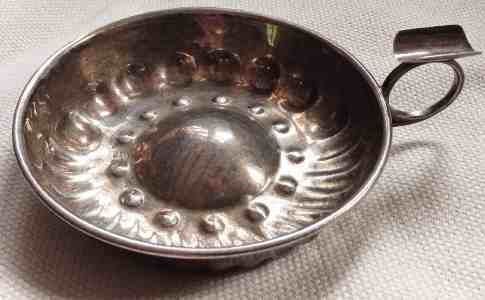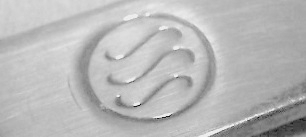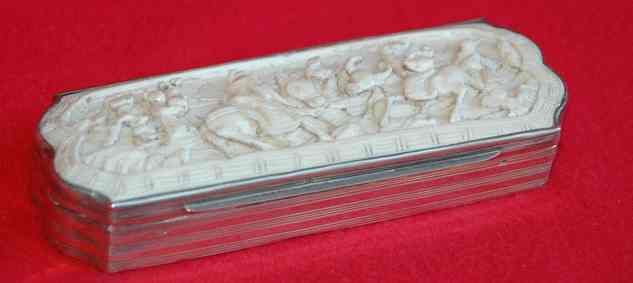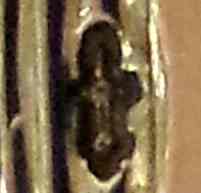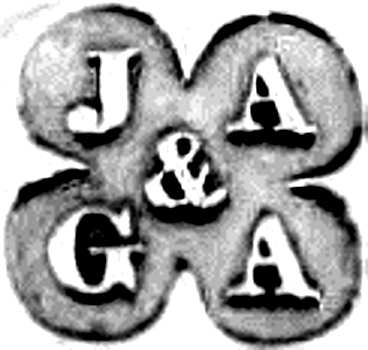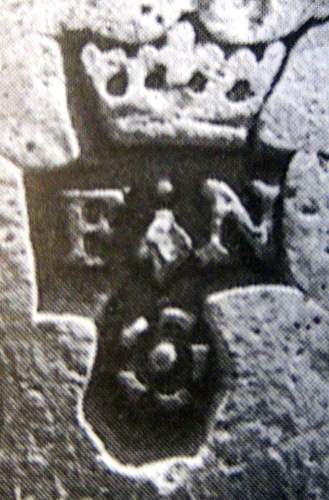
Robert Massart presents:
Nesme: a dynasty of French Silversmiths

La Dynastie des Orfèvres Nesme de Lyon

During the pre-revolutionary period France obtained superiority
in the art of silversmithing. Although cities such as Strasbourg,
Bordeaux and Marseille had remarkable workshops, the brilliant
creations of the silversmiths in Lyon resulted in a greater
importance of this city. The religious goldsmithing was a
significant part of the production in Lyon and even managed to
compete with Paris.
About 1300 silversmiths practiced at Lyon till the revolution
and 1227 silversmiths and jewellers were identified between 1798
and 1940.
During the XIVth and the XVth century the business activity at
Lyon opened to the world, and attracted foreign silversmiths,
who took advantage of the liberal regime, which at that time was
not available anywhere else.
During the XVIth century Lyon obtained a growing reputation for
his silversmithing and jewellery. At that moment the number of
silversmiths raised to 524. The workforce declined considerably
during the XVIIth century, as Paris became more important due to
the passion of the "Sun-King" Louis XIV for golden and silver
objects and the important orders the King and his Court gave to
the Parisian silversmiths.
In 1668 the state, impoverished by the wars, imposed to the King
to melt down all silver objects, in order to fill the Treasury
again. This resulted obviously in a decrease of orders and
subsequently a reduction of the number of silversmiths.......
click here
 click here
click here

Welcome to new ASCAS members:
Justin Blanchard - USA
Jean-Yves Gamet - France
Vladimir Jekic - Serbia
Gerardo Lupo - Italy
Julia Marie Weintritt-Pastore and Frank Pastore - USA
Ian and Myfanwy Spellerberg
Carole Thomas - USA
Kathy Tourney writes:
...I purchased this oval 18 inch silver divided bowl with
applied feet. This is the only maker's mark on the piece.
Is there any chance it could be sterling?
Do you have any way of telling the age and origin?
The mark is only about 3/8 of an inch the longest direction.
Thank you.
Sincerely,
Kathy Tourney
Jolyon Warwick James writes:
...A little fiddle pattern mustard spoon has been in my
possession for years and bears these marks. I wondered if anyone
could identify
Jolyon Warwick James
Amanda Dawson writes:
...I was wondering if you could help me determine where this
serving set originated from.
My great grandmother was given this as a gift between 1956 and
1958 from a friend who was visiting England.
Any information you can provide will be helpful!
Thank you,
Amanda Dawson
Karyn Lobb writes:
...I am hoping that you can help me with some spoons I inherited
from my Mom and Dad.
My Dad sent these to my Mother while he was serving in WWII.
Thank You,
Karyn Lobb
This is the information found about the mark: it's
Spanish, town of Cordoba, 2nd half of 19th century (1883), maker
A. Merino, assayer Larriva
Giorgio Busetto
Christophe Ginter writes:
... please advise about these marks on a nice silver item with
Italian marks (and the French "charançon" punch for import, as
from 1893).
Thank You in advance and best regards.
Christophe Ginter
Unusual marks.... possibly Italians ... possibly Venetian
....
Giorgio Busetto
Cheryl Winkley writes
While researching something else, happened on a rather old
post from the December 2006 newsletter regarding a modern spoon
marked "SSS" - if not already answered, can provide the maker
and a bit more.
The mark belonged to "Studio Silversmiths", distributed by Sun
Glo Studios of New York City - the Swedish-inspired beaded
pattern, named "'Ingrid", was designed by Royal Hickman and
originally produced, starting in 1946, by Three Crowns
Silversmiths in Pottstown, PA, they were also distributed by Sun
Glo Studios at that time, and the "Studio Silversmiths" name
probably came into use when Three Crowns Industries went out of
business in the early '60s.
Cheryl Winkley
Janjaap Luijt writes:
The mastersmark on the snuff box of Riccardo Bonardi is that
of widow H.J. van Halteren (named Teuntje Streef), who lived in
Schoonhoven (the Netherlands) and used this mark from 1863 until
1895.
Best regards,
Janjaap Luijt
Peter van Oel writes:
The maker's mark reads WH 33 for: Widow H.J. van Halteren,
maiden name; Teuntje Streef, registered in the city of
Schoonhoven from 1863-1895. Her shop made snuff boxes, pill
boxes and book locks and jewellery. In 1867 she hired a merchant
traveller G. de Vos. She exported brooches and ear studs to the
United Kingdom. After her death January 1st 1895 her children
took over the shop.
2nd Image sword mark, this sword (used 1814-1905) Standard mark
for; small work silver minimum 833 fineness= 83.3% pure silver
and used on small work without date letter and office mark and
in combination with maker's mark.
Best wishes,
Peter van Oel

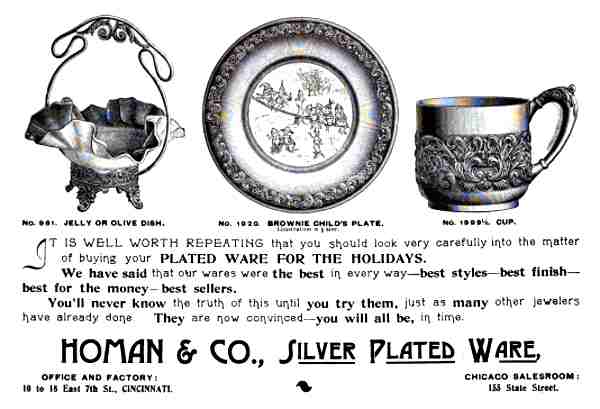
|
This month ASCAS presents an ancient advertisement
of:
HOMAN & CO
10 to 18 East 7th St. CINCINNATI
The firm was founded in Cincinnati in 1847 by
Henry Homan and Asa F. Flagg as manufacturers of
Britannia ware under the name Flagg & Homan.
Homan family managed the business as Homan & Co
until 1887, gradually changing from the manufacture
of pewter, Britannia metal and German silver to
electroplated silverware.
Around 1896 the name of the firm was Homan Silver
Plate Company, which was succeeded (between 1904 and
1915) by Homan Manufacturing Company. The firm went
out of business in 1941.
This image is part of the
ADVERTISEMENTS IN SILVER - SILVER ADVERTISING
section of www.silvercollection.it website
|
"A WORD per MONTH"
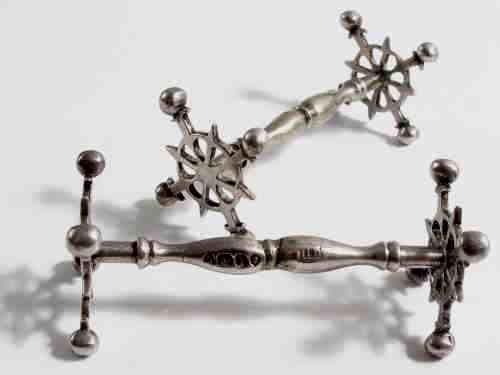
|
KNIFE REST
Knife rest is a small low utensil for supporting the
blade of a knife at the dinner table in a manner that it
does not soil the tablecloth.
The most common are composed of a horizontal bar joining
the center of two X shaped supports.
Other examples were made in fantasy style assuming the
shape of horses, dogs, birds, horns and other animals....
more
|
"A SILVERSMITH per MONTH"
|
|
ANGELL FAMILY
Joseph Angell (senior) was
apprenticed to Henry Nutting in 1796, obtaining his
freedom in 1804. His brother John Angell was apprenticed
to William Elliott in 1799 and obtained his freedom in
1807. Another brother (Abraham) was apprenticed to
Joseph Angell (1806) but never obtained his freedom.
Joseph Angell senior entered his first mark in 1811,
being active as "plate worker" at 55 Compton Street,
Clerkenwell.
In 1831 he entered a joint mark with his brother John
Angell (mark JA over IA, on 31 January 1831). In c. 1837
Joseph Angell junior (son of Joseph Angell senior)
joined to the partnership and the business was continued
under the style Angell, Son & Angell.
In 1840 John Angell left the partnership and the
business was continued as Joseph Angell & Son by Joseph
Angell senior and Joseph Angell junior. The new mark (JA
over JA) was entered on 6 July 1840 and in 1842 the
business moved to 25 Panton Street, Haymarket.
After the retirement of Joseph Angell senior (1848) the
business was continued by his son Joseph junior under
his own name, opening new retail premises at 10 Strand,
Charing Cross (1849)......
more
|
Closing our APRIL 2015 edition of ASCAS Newsletter I hope
you have appreciated its content.
Your comments, suggestions and advice will be of great help.
My thanks to Amanda Dawson, Christophe Ginter, Jolyon Warwick
James, Karyn Lobb, Janjaap Luijt, Robert Massart, Carole Thomas,
Kathy Tourney, Peter van Oel and Cheryl Winkley for their
precious contributions.
Giorgio Busetto
Secretary
DISCLAIMER AND PRIVACY POLICY
ASCAS is a community of people having a common
interest in antique silver.
It is a non-profit association without commercial links.
Membership is open to whomever has a true interest in
this subject matter.
ASCAS has no real property and no fees are requested nor
accepted from members.
ASCAS keeps in touch with its members only through
periodical newsletters, e-mails and web-site updating
and ignores and is not responsible for any other
activity pursued by its members.
Likewise, ASCAS is not responsible for opinions,
evaluation and images displayed, and in any form
published or supplied for publication, by its members
who, in any case, maintain the property of their works
and assure the respect of national and international
legislation about Intellectual Property.
ASCAS does not have the full addresses of its members (only
town, country and e-mail address are requested for
membership).
ASCAS handles and protects with care its members' e-mail
addresses, will not disclose the addresses to third
parties, will use this information only to reply to
requests received from members and for communications
strictly related to its activity.
These rules are expressly accepted by submitting the
membership request.
|
|
 newsletter
# 131 April 2015
newsletter
# 131 April 2015







